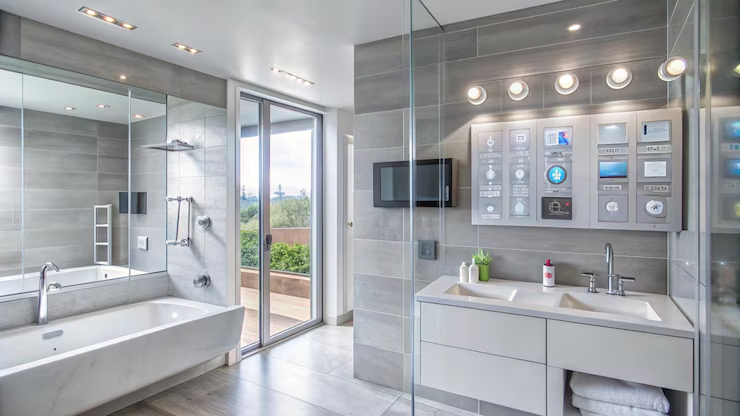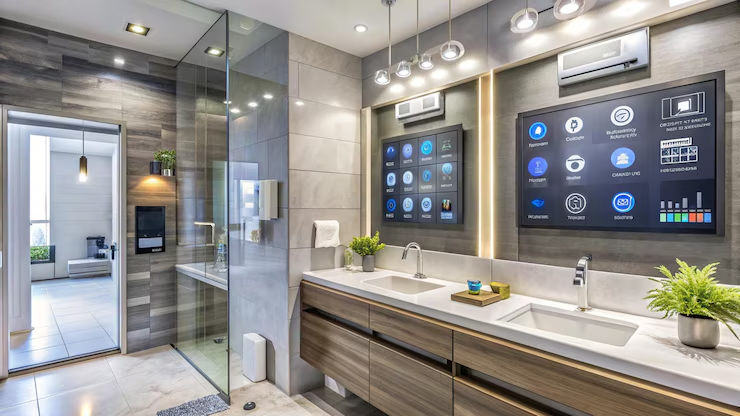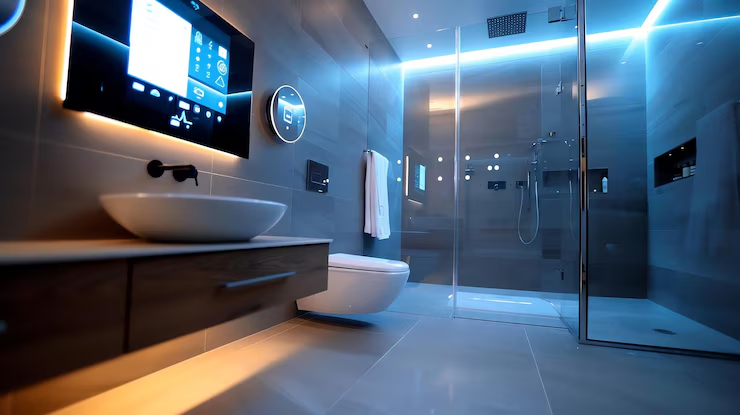The bathroom is one of the most used spaces in a home, and its comfort plays a critical role in shaping daily routines. Whether it’s a relaxing shower after a long day or a quick morning refresh, the temperature of the bathroom significantly impacts the overall experience. As we enter an era of smarter homes and more energy-efficient technologies, automated temperature management systems are becoming increasingly popular in bathroom renovations. These systems offer advanced solutions that not only improve comfort but also enhance energy efficiency.
What is Automated Temperature Management?

Automated temperature management refers to the use of smart technology to control the climate in a room, specifically regulating both heating and cooling systems. In the context of a bathroom renovation, this means integrating technology that allows for precise control over the room’s temperature, humidity, and air quality. The goal is to ensure that the bathroom remains at the ideal temperature for comfort, energy savings, and even safety, without requiring constant manual adjustments.
Key Components of Automated Temperature Management in Bathrooms
- Smart Thermostats: The heart of automated temperature control is often a smart thermostat. These devices allow users to program and control the heating and cooling of the bathroom remotely via smartphone apps, voice assistants (like Alexa or Google Assistant), or even directly on the thermostat. Some models can learn user preferences over time, adjusting the temperature based on your daily routine.
- Heated Floors: Radiant floor heating systems are one of the most luxurious and effective ways to keep a bathroom warm during colder months. Automated systems can link radiant floor heaters to smart thermostats, ensuring the floor stays warm without wasting energy. You can schedule the system to turn on before you wake up or before you head into the bathroom, so it’s always at the perfect temperature.
- Heated Towel Racks: Another popular addition to bathroom renovations is a heated towel rack, which offers not only a touch of luxury but also practical benefits. With automated temperature control, these racks can be programmed to warm towels before use and even turn off automatically when not in need, further enhancing energy efficiency.
- Humidity Sensors and Ventilation Fans: High humidity in bathrooms can lead to mold, mildew, and long-term damage. Smart humidity sensors can detect moisture levels in the air and activate ventilation fans accordingly. This keeps the bathroom dry and prevents excess moisture from lingering after a shower or bath. Some systems also adjust the fan speed based on humidity levels, optimizing both air quality and energy consumption.
- Smart Mirrors with Climate Control: In high-end renovations, smart mirrors are an emerging trend. These mirrors often feature built-in heating elements to prevent fogging while maintaining a comfortable ambient temperature in the bathroom. They may also have integrated lighting systems that adjust according to the time of day or user preferences.
- Intelligent Shower Systems: Automated shower systems with digital temperature control are transforming the shower experience. These systems can pre-set the ideal water temperature, pressure, and flow rate. Some even offer voice-activated commands, allowing users to start the shower at the perfect temperature without manually adjusting the knobs.
Benefits of Automated Temperature Management

- Increased Comfort: One of the most obvious advantages of automated temperature management is the enhanced comfort it offers. Imagine stepping into a bathroom that is already heated to your desired temperature, with a warm towel waiting for you after your shower. Automated systems can ensure that these comforts are always available without the need for manual intervention.
- Energy Efficiency: Automated temperature management can significantly reduce energy consumption. By programming your systems to only operate when needed (for example, turning off the heater when you’re not in the bathroom), you avoid waste. Additionally, smart systems optimize energy use based on occupancy and weather conditions, further reducing your carbon footprint.
- Cost Savings: With better control over heating and cooling, users can reduce their monthly utility bills. Automated temperature systems allow for greater efficiency in both heating and cooling, lowering the overall energy consumption of the bathroom.
- Convenience and Customization: Automated systems allow for a high level of customization. You can tailor the bathroom’s climate to your exact preferences, scheduling the temperature and humidity controls to your exact needs. Whether you want a warm bathroom after a workout or a dry space after a long shower, you can program these settings in advance.
- Enhanced Safety: In bathrooms, temperature regulation is not just about comfort—it’s about safety. Automated systems can prevent water heaters from becoming too hot, reducing the risk of burns. Similarly, smart fans can reduce the risk of mold and mildew by ensuring proper ventilation.
Future Trends in Bathroom Automation

- Integration with Whole-Home Systems: As home automation continues to evolve, bathroom temperature management systems will increasingly integrate with other smart home technologies, creating a seamless experience. For instance, the bathroom’s temperature can adjust based on your home’s overall climate control settings, or even sync with your sleep cycle for optimal comfort.
- AI-driven Customization: The next wave of smart thermostats and climate control systems may incorporate artificial intelligence (AI) to adapt to user behavior. By learning your routines, preferences, and even health conditions, these systems could adjust the bathroom’s environment accordingly without the need for manual input.
- Sustainability Features: As the world becomes more focused on sustainability, automated temperature systems in bathrooms will likely become more energy-efficient and eco-friendly. Expect to see features like water-saving showerheads, more effective energy use tracking, and systems designed to minimize water waste while maximizing comfort.
Conclusion
Automated temperature management in bathroom renovations is not just a luxury—it’s quickly becoming a necessity for homeowners looking to improve their bathroom’s comfort, efficiency, and overall performance. By integrating smart thermostats, radiant floor heating, humidity sensors, and intelligent shower systems, homeowners can create a more personalized and sustainable space. As technology continues to advance, the bathroom of the future will offer even more sophisticated and user-friendly solutions to ensure that every moment spent in this essential room is as comfortable and convenient as possible.
Embracing automation in bathroom renovations isn’t just about embracing the future of design—it’s about enhancing your day-to-day comfort while contributing to a more energy-efficient and sustainable home.

Leave a Reply